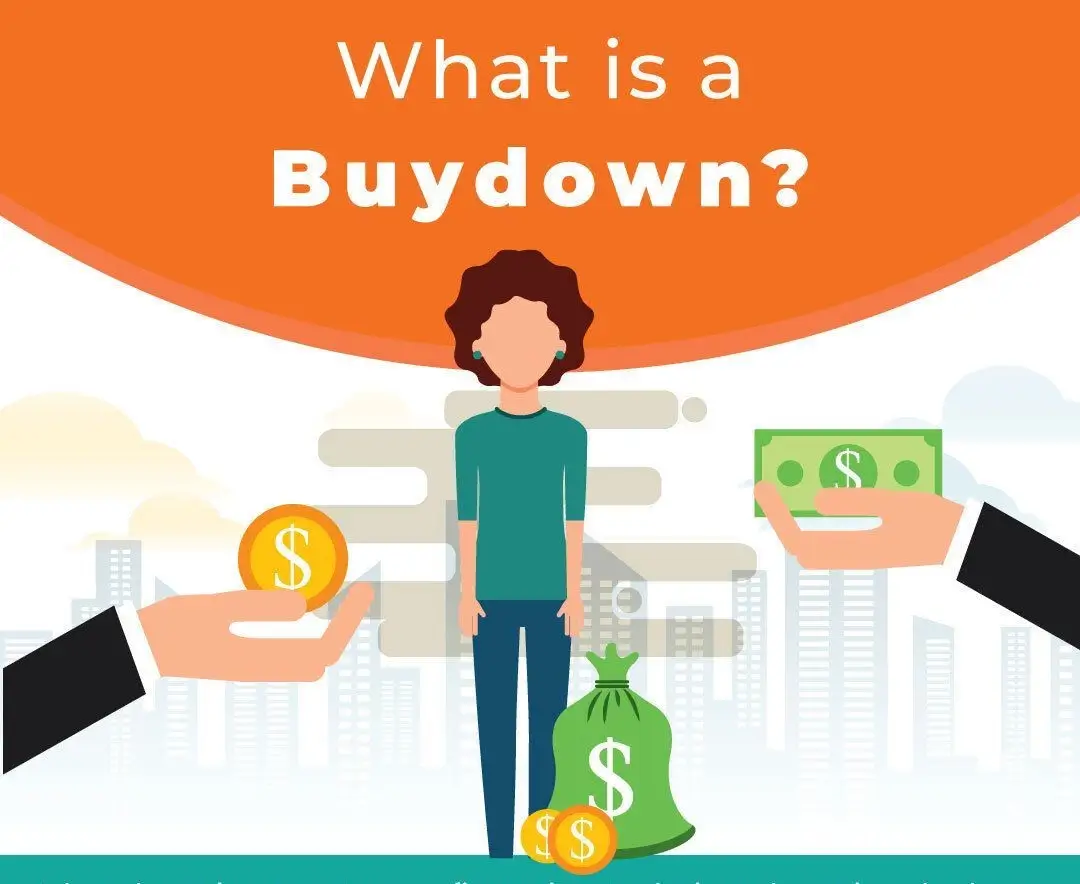

Although temporary rate buydowns have been around for a very long time, they appear to be re-emerging. Seller-paid temporary buydowns, specifically, are currently receiving much of the spotlight. Let’s look at temporary rate buydowns and the math behind them. And, equally important, at how they compare to better known and widely used permanent rate buydowns.
Temporary buydowns are re-emerging and becoming relevant in today’s environment of higher rates because they are effective at reducing the payment during the first one, two, or three years of homeownership. And, as the market is turning less seller’s and more buyers, seller-paid temporary buydowns are gaining ground.
What is a buydown, and what is the difference between temporary and permanent buydowns?
Let’s dive right in. Permanent buydown is rather common. Borrowers can pay discount points to reduce their rate, and that rate reduction becomes permanent. The reduced rate would stay for the life of the loan. The borrower can negotiate seller credit to cover the points paid, making it a seller-paid permanent buydown.
With temporary buydown, the rate is reduced only for a specific time period. It is reduced by paying an upfront fee which is placed into a buydown account, and portion of that upfront fee is allocated each month to reduce the borrower’s payments during the buydown period.
1-0 temporary buydown reduces the rate by 1% during the first year, and then the rate revers to Note (regular, without the effect of buydown rate) for the remaining life of the loan.
2-1 temporary buydown reduces the rate by 2% during the first year, by 1% during the second year, and then the rate reverts to Note rate for the remaining life of the loan.
3-2-1 temporary buydown reduces the rate by 3% during the first year, by 2% during the second year, by 1% during the third year, and then revers to Note rate for the remaining life of the loan.
Temporary buydown eases the borrower into the loan repayment. During the first year or two, new homebuyers typically encounter extra expenses associated with furnishing the home and making minor improvements, so this comes in very handy.
How does a temporary buydown compare to a permanent buydown?
To answer this question, we must do some second-grade math. But feel free to skip straight to the conclusion. I will only focus on 2-1 temporary buydown here, but please feel free to follow the same math for the other buydown types.
We will use the following example: 600K purchase of single-family primary residence with 25% down (450K loan) and perfect credit score of 740+. We will calculate and compare the benefit of a 2-1 temporary buydown to the benefit of permanent buydown under similar conditions. For this, we must make some assumptions about rates. As of the time of this writing (11/20/22), for the scenario above, based on Zillow rate listings for the state of MA, typical 30-year fixed rates appear to be 6.875% with zero points, and 6.125% with 2.375 points (the reason for using the rate with these points is explained below). Disclaimer: this information is only intended to be used for illustrative purposes and is neither advertisement nor an offer or any kind. Rates vary from lender to lender and change daily. The amount of rate reduction certain points can buy can also vary based on market conditions.
First let’s see how the temporary 2-1 buydown plays out with these six super simple steps.
Step 1. Establish the regular payment without the buydown (use any simple mortgage calculator):
Principal and interest payment on 450K loan at 6.875% rate is $,2956.18/mo.
Step 2. Establish the payment during the first year of 2-1 buydown (4.875% rate in effect):
Principal and interest payment on 450K loan at 4.875% rate is: $2,381.44/mo.
Step 3. Establish the payment during the second year of 2-1 buydown (5.875% rate in effect):
Principal and interest payment on 450K loan at 5.875% rate is: $2,661.92/mo.
Step 4. Calculate total payments during the 24 months of buydown period
Total payments the borrower would make during the first 24 months: 2,381.44 x 12 + 2,661.92 x 12 = $60,520.32.
Step 5. Calculate total payments during the 24 months period without the buydown (regular payments): 2,956.18 x 24 = $70,948.32.
Step 6. Calculate the total payment reduction during the buydown period:
70,948.32 - 60,520.32 = $10,428. The borrower would save $10,428 during 24 months of the buydown period. The savings would then stop since the payment rate reverts to the original Note rate.
To make the 2-1 temporary buydown work, this same amount ($10,428) would be collected at closing as upfront buydown fee, which the lender would then place into the buydown account to tap every month for 24 months. If the buydown is seller-paid, the seller would agree to pay this upfront fee on behalf of the buyer. The temporary buydown would then be seller-paid. Let’s be very clear: the amount the seller would agree to cover is the amount the borrower would save during the temporary buydown period.
How does this compare to traditional (permanent) buydown?
Earlier I mentioned that at time of this writing, the rate could be bought down to 6.125% by paying 2.375 discount points upfront. 2.375 points (2.375% of the loan amount) for 450K loan is $10,687.50, the amount very similar to the $10,428 temporary buydown upfront fee calculated above. This is exactly why this number of points and the corresponding rate were chosen for this example. This buydown would be permanent, the reduced rate would stay for the life of the loan. It’s worth noting one more time that the rate reduction 2.375 points can buy may vary from day to day depending on the market and may very well be less. The calculations and the result below are only presented as an example.
Now, let’s see how such permanent buydown would compare to the temporary buydown above. Given the similarity in their upfront cost, it would be a fair comparison.
Principal and interest payment for the loan scenario above, but at the permanently bought down rate of 6.125% (use any simple mortgage calculator) is: $2,734.25/mo.
During the first 24 months, the borrower would pay 2734.25 x 24 = $65,622, which is $5,101.68 more than they would pay under the temporary 2-1 buydown above. Therefore, during the first two years, the permanent buydown is not nearly as effective as the temporary buydown. With the permanent buydown, however, the savings continue for the remaining life of the loan, while with temporary buydown, the savings stop at this point.
During the remaining 336 months of the loan term, the borrower with the 2-1 temporary buydown would pay the regular amount: 2956.18 x 336 = $993,276.48, while with the permanent buydown, the borrower would pay 2734.25 x 336 = $918,708.00. That is, during the remaining life of the loan, the borrower opting for a permanent buydown would save $74,568.48 more than the borrower opting for the temporary 2-1 buydown.
Conclusion
The temporary buydown is more effective at reducing the payment during the temporary buydown period. Permanent buydown is not nearly as effective short term. Long term, however, it is much more effective than the temporary buydown.
Roman Shulman, NMLS 11481.
Superior Funding Corporation, Newton, MA. NMLS 2972.

